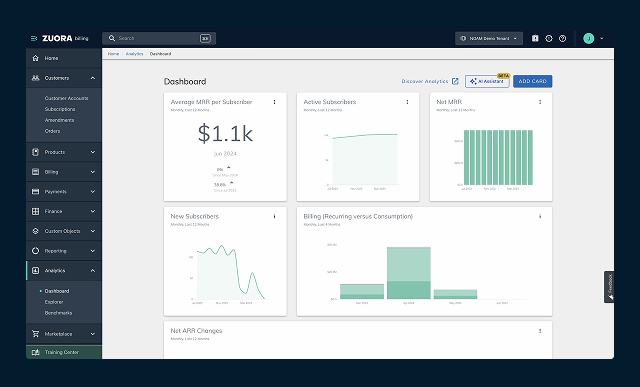The modern ERP stack is a beautiful thing.
But, as beautiful as it is, it’s often a complex interwoven multi-tiered network of software services, application endpoints, data-flows and (now, in the modern era of the Internet of Things) a computing fabric also built out of various machine engines all producing their own personal data heartbeats.
That’s fine, say most ERP vendors, the solution you have deployed with us is built from the ground up to represent a ‘family unit’ of unified and conjoined services that can be operated through various management dashboards, all of which offer that much-fabled ‘single pane of glass’ view into live operations.
Except, that’s not quite true, is it?
ERP is good at ERP
The truth is that ERP vendors, generally, are good at ERP; they’re not necessarily data integration specialists fully adept at all the tasks associated with fusing Application Programming Interfaces (APIs) together and providing a gateway to building automations (plural) i.e. pre-aligned accelerator technologies that use Robot Process Automation (RPA) software bots to complete tasks faster.
Yes, ERP suites feature bots and RPA, that’s not the argument here, they do exist. But where ERP has RPA (ErpRPA perhaps?) it is more generally built in the suite, of the suite and for the suite – rather than being more widely engineered for the public cloud and external API interface points.
This backdrop is much of the reason why Salesforce bought MuleSoft and completed the acquisition back in 2018.
MuleSoft is the integration engine inside of all Salesforce Clouds – and this is a statement of fact detailed in exact terms by MuleSoft CEO & GM Brent Hayward (pictured above), speaking at MuleSoft CONNECT New York 2022 this month.
900 apps, as an average
To validate and underpin this proposition we can look to MuleSoft Deloitte Digital research which found that the average large-sized organization uses more than 900 individual enterprise software applications and 98% of businesses currently use public or private APIs to interconnect their stack’s functionality.
If this average enterprise has 900 apps – and if even 50 of those apps fall into the realm of ERP – then the integration and connectivity task ahead of modern cloud-centric firms very arguably extends outside of on-board ERP suite integration and RPA functionality.
MuleSoft targets this market with what is now an expanded version of its own platform within Salesforce that extends to every team to provide automation and integration across any system or workflow.
As part of the MuleSoft CONNECT 2022 event, attendees learned that MuleSoft now includes no-code capabilities to automate repetitive manual tasks using bots with MuleSoft RPA and to quickly connect data from any system, such as Slack, Stripe, and Workday, with MuleSoft Composer.
The new capabilities are fully integrated into Salesforce Flow, a suite of automation technologies across the Salesforce Customer 360 to help save time, increase productivity and deliver better experiences.
Global electronic security company ADT is using MuleSoft to create personalized customer services.
“Our growth, through acquisitions and ‘purposeful change’, provided an opportunity to assess and improve employee and customer experiences by streamlining our technology stack. With MuleSoft, we’ve been able to integrate systems and automate processes more seamlessly to deliver unified and premium customer experiences from anywhere and across all our business divisions,” said Sam Jaddi, CIO, ADT.
Streamlining stacks, grasping governance
With macroeconomic uncertainty across markets, hiring, costs, and more, businesses are focused on efficient growth, cost savings, and productivity. MuleSoft points to Salesforce research here and says that more than 90% have seen a rise in demand for time-saving automation from business teams over the past two years.
“However, the all-digital, work-from-anywhere world has increased the number of systems and amount of data companies must manage and connect, creating integration roadblocks to automation progress. And when new systems are needed or business requirements change, 96% of companies find it difficult to modify existing automations,” said the company, in a press statement.
What all of this comes down to is (as the ADT spokesperson notes above) a drive to streamline IT stacks, which is not a widely over-used expression that we hear coming out of ERP vendors (in truth, it’s more a case of widening stacks and expanding services, right?)… so if MuleSoft can provide that element of integration for automation advantage, then it could win more out of the ERP space on the road ahead.
Is Salesforce ERP?
Does this mean that we should think of Salesforce as ERP in and of itself?
No, the company is quite clear on this front here and states that, “Salesforce is not an ERP. Salesforce offers various business solutions, which can be integrated to enhance and support your ERP but it does not provide an ERP product. ERPs and CRMs are both used by businesses to improve efficiency and streamline operations, but they serve distinct purposes.”
Our (title) question was: does your ERP stack need an integration boost?
The answer (and yes we would put money on it) is probably. Given the composable nature of containerized cloud services and of the now far more disaggregated elements of cloud combined with the neural network of API connections points that modern businesses are using, this is not an inherent element of ERP, so a dose of specialized integration injection is very arguably called for now.
You can read the core product news statement issued by MuleSoft here on ERP Today.




